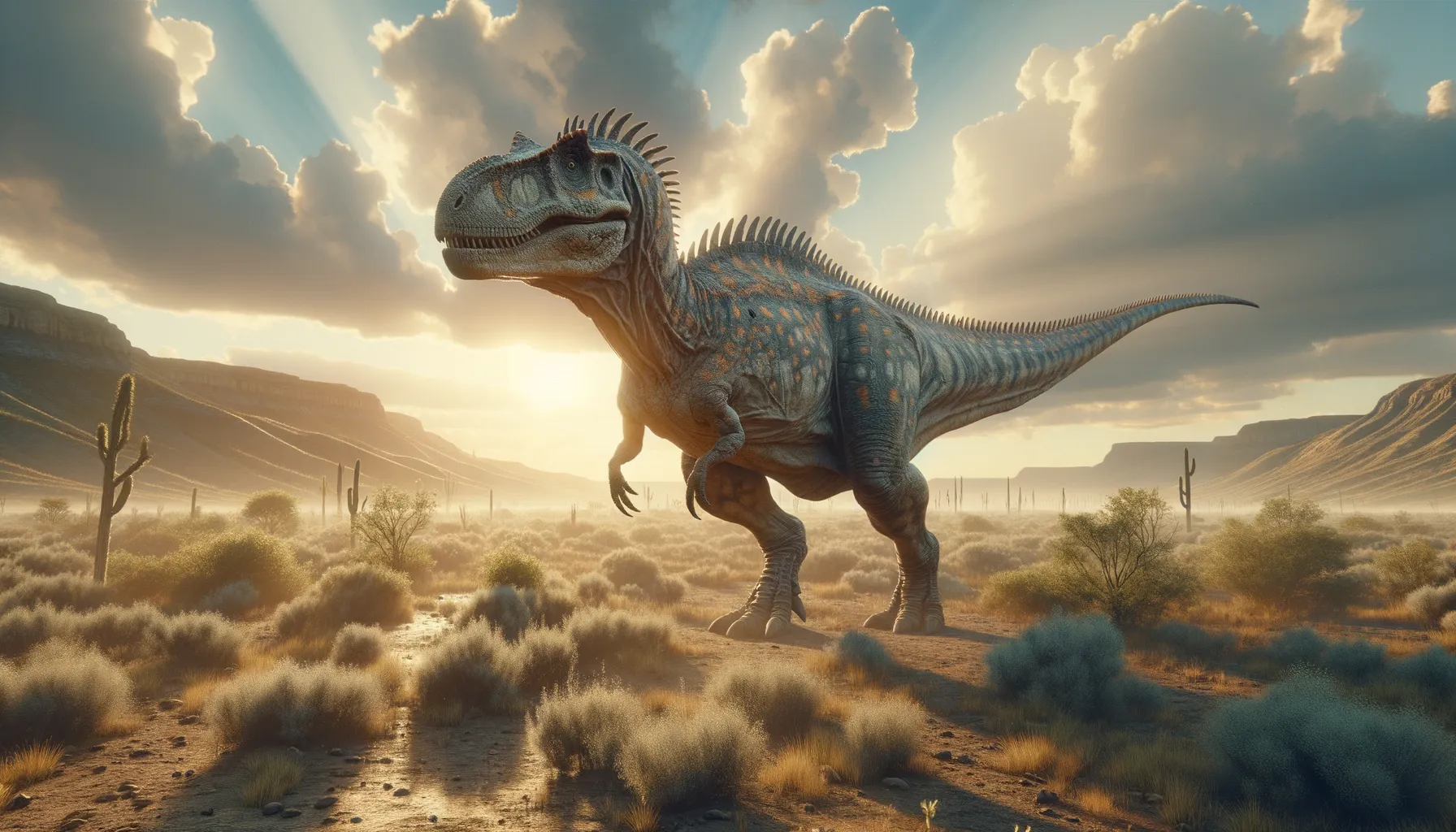
Alcovasaurus
Armored guardian of the Jurassic plains.
Period
Jurassic
Length
About 15 to 20 feet long.
Height
Around 7 feet at the shoulder.
Weight
Approximately 2 to 3 tons.
Alcovasaurus was a medium-sized, herbivorous dinosaur notable for its armored body. It roamed the earth during the late Jurassic period. Its armament helped protect it from predators, while its plant-based diet contributed to a rich ecosystem. Initially discovered in Wyoming, its fossils offer insights into the diverse world of Jurassic North America. As a member of the ankylosaur family, its physical traits were distinctive among the different species of that era.
Diet
Alcovasaurus primarily fed on low-lying vegetation. Its diet consisted of ferns, cycads, and other prehistoric plants. This herbivorous diet required a substantial amount of food to sustain its large body.
Hunting
Alcovasaurus did not hunt as it was a herbivore. Instead, it likely spent much of its time foraging for food. Its strong limbs and body armor helped protect it from predators while grazing.
Environmental challenges
The landscape was fraught with predators like Allosaurus, necessitating a robust defense mechanism. Changing climates and vegetation patterns posed additional challenges. Alcovasaurus had to adapt to different food availabilities due to seasonal shifts. Droughts may have pressured its survival strategies.
Speed
Moderate, typical for an armored dinosaur.
Lifespan
Estimated around 20 to 30 years.
First discovery
First discovered in the Morrison Formation, Wyoming.
Fun Facts
- Alcovasaurus lived during the Late Jurassic period, which was about 150 million years ago.
- This dinosaur was an herbivore, meaning it only ate plants and likely feasted on ferns and conifers.
- Alcovasaurus was a type of stegosaurs, which are famous for their row of unique bony plates along their backs.
- Its fossils were discovered in Wyoming, USA, giving paleontologists clues about the environment it lived in.
- Alcovasaurus had a spiked tail, which it might have used to defend itself against predators.
- The name Alcovasaurus means 'Alcova lizard,' named after the town of Alcova in Wyoming where it was found.
- Although it was related to the more famous Stegosaurus, Alcovasaurus had its own unique features that set it apart.
Growth and Development
Alcovasaurus, like many dinosaurs, hatched from eggs and grew rapidly during its early years. Juveniles would have undergone significant changes as they developed their characteristic armor. The growth rate might have slowed as they reached adulthood. It likely took several years for an individual to attain full size and maturity.
Habitat
Alcovasaurus inhabited forested areas and open plains in what is now North America. Its environment was rich in vegetation, providing ample food sources. These areas also had swampy regions, which supported diverse plant life. The climate was warm, supporting a variety of flora throughout the year.
Interaction with other species
Alcovasaurus coexisted with a diverse range of species, both herbivores and carnivores. It often had to fend off predators like theropods but could rely on its thick armor for protection. Herbivorous species might have competed for food resources, especially during scarce periods. Mutual grazing could have occurred with non-threatening species.
Natural lifespan
Alcovasaurus could live up to 30 years naturally.
Reproduction
Reproduction involved laying eggs in nests made of vegetation. These nests were likely hidden to protect from predators and the environment. Both parents might have contributed to defending the nest against threats. Young Alcovasaurus would have been vulnerable until reaching a certain size.
Social behaviour
Alcovasaurus may have exhibited some degree of social behavior, perhaps forming small groups. Such groups could have provided additional protection from predators. Interaction within these groups might have involved communication through sounds or body language. Solitary behavior could have also been possible during certain life stages.
Fossil locations
Fossils predominantly come from the Morrison Formation in the western United States. This formation is one of the richest sources of Jurassic-period fossils. Additional remains could be found in similar geological settings. Ongoing excavations may further uncover its distribution range.
